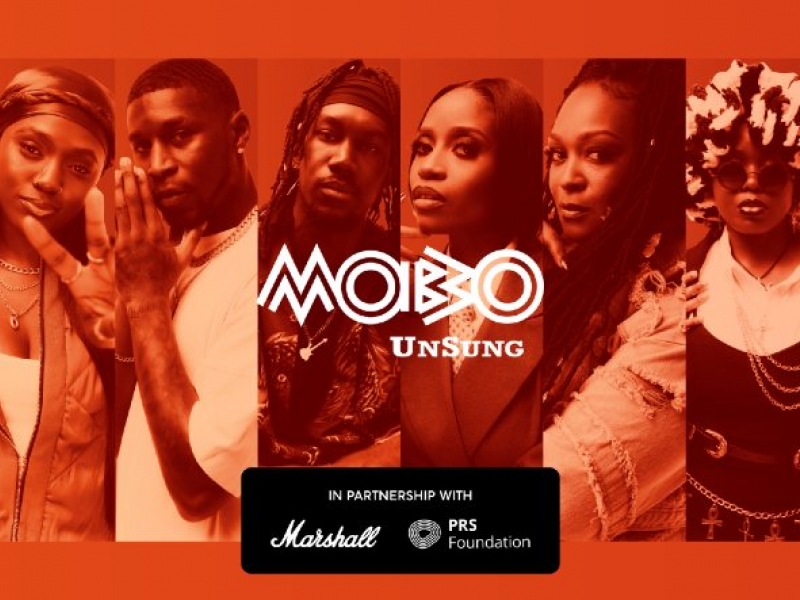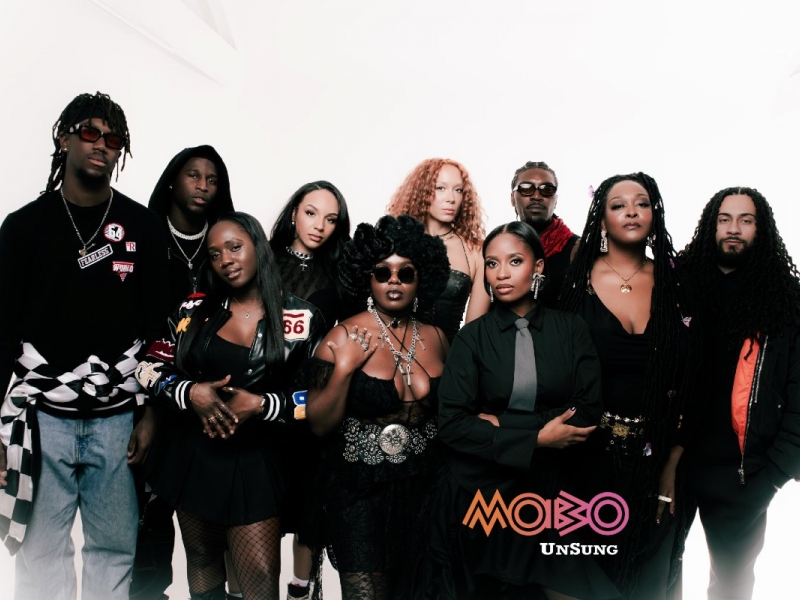LANDMARK REPORT INTO UK’S CREATIVE INDUSTRIES
CREATIVE INDUSTRIES FEDERATION BACKED BY MOBO REVEALS DEPTH OF BLACK, ASIAN & MINORITY ETHNIC EMPLOYMENT GAP
Despite pockets of progress in areas such as design and IT, software & computer services, just 11% of the workforce in key economic sectors is drawn from Britain’s minorities - when new analysis shows this figure should be much higher
The Creative Industries Federation, in partnership with the MOBO organisation, today launches Creative Diversity – The state of diversity in the UK’s creative industries and what we can do about it.
Drawing on benchmark studies from across the full spectrum of creative disciplines, as well as a range of insights and analysis from industry heavyweights, “Creative Diversity” reaches behind the headline figures to present a detailed and compelling “state of the creative nation” narrative.
The study is a new analysis that reveals Britain’s world-beating creative industries are not as diverse as they appear at first sight.
It argues that while diversity has been long seen as a matter of social justice, there is a hard-headed business case for tackling the failure to capitalise on the full range of talent available and ensure that the creative industries remain the fastest-growing part of the UK economy.
And so it provides a compendium of best practice by forward-looking organisations and businesses that have already acted to improve the diversity of their staff. It also includes case studies to show how everyone can act now to make a difference.
Creative Diversity is being launched on the eve of the MOBO Season, an exciting initiative featuring events and activities dedicated to raising exceptional talent to the forefront of popular British culture. MOBO Season will be launching under the banner of “Rise with Us”, and it has been put together by MOBO who after 20 years of promoting diversity within music, are now working with partners across the creative industry of film, theatre, fashion and art. The Season will run throughout October in the lead up to the awards on November 4th.
The review, by Federation Policy and Research Manager Eliza Easton, shows that apparent improvements in diversity are not as good as they look.
Government statistics report a 12.5 per cent increase in the number of jobs in the creative industries held by Black, Asian and Minority Ethnic (BAME) people between 2013 and 2014. They account for 11 per cent of jobs in the creative, which is a similar level to that in the general working population of the UK.
But when the Federation re-balanced employment statistics according to where the jobs are held, the results are not so impressive. With 32 per cent of all creative jobs in London where 40 per cent of the workforce is BAME, a much higher 17.8 per cent of the creative industries workforce should be BAME.
The lack of diversity across gender, disability, sexuality, age and socioeconomic background also requires action as, in some cases, advances are being reversed.
Yet evidence from McKinsey and Consulting shows that the most racially and ethnically diverse companies and organisations with more women are likely to have better financial results.
Key points in the study include:
● The percentage of women in the creative industries fell from 37.1 per cent in 2013 to 36.7 per cent last year, even though women hold 47.2 per cent of jobs in the wider UK workforce.
● Women make up only 19.7% of the workforce in IT, software, and computer services, however, this same sector has one of the fastest growing rates of BAME employment at 54.4% compared with 18.9% growth for the white workforce (between 2011-2014).
● Failing to diversify means wasted business opportunities; the BAME population will make up nearly a third of the UK’s population by 2050 and its disposable income increased ten-fold in the decade from 2001 (to £300bn from £32bn).
● Women influence 80 per cent of buying decisions and by 2025 are expected to own 60 per cent of all personal wealth.
● Only 14 per cent of workers in the £1.7 billion video games industry are women yet they play more than half the games.
● Each industry within the creative sector (advertising & marketing, crafts, architecture, design: product, graphic & fashion, film, TV, video, radio & photography, IT, software & computer services, publishing, museums, galleries & libraries, music, performing & visual arts) demonstrates potential for diverse growth in all.
● Evidence from parts of the sector shows that those who attended private school earn nearly £6,000 more than the average.
● Unconscious (and conscious) biases may currently be affecting employment – from ‘implicit stereotypes’, to ‘group favouritism’ & ‘homogeneity bias’.
Additional findings of the study for specific sectors include:
Advertising & Marketing:
● 57% of white respondents to a recent Advertising Association opinion poll believed that advertising represents the UK’s multicultural society, whilst only 45% of BAME respondents agreed
● 41.9% of those working in advertising within the creative industries are women, but only 25% are women at senior management level
Architecture:
● An architectural education lasts seven years and leaves students with debts in excess of £50,000
● RIBA (Royal Institute of British Architects) UK chartered membership includes just 17.6% women
● Only 0.9% of people working in architectural businesses had no qualifications, and 74.3% had a degree
● In 2014, there were only 9,000 registered BAME architects, compared to 133,000 white architects
● The number of white architects continues to grow, whilst the number of BAME architects has shrunk between 2013 and 2014
Crafts:
● The typical profile of those working in craft is female (70%), older, and white (92%) with a high level of dyslexia (13%)
● Craft businesses are widely distributed, with 80% located outside of London
● There is a danger of craft becoming the preserve of high socioeconomic groups able to fund their training and subsidise their business, because of the reduction in craft-related formal education and the challenge of delivering craft apprenticeships
Design: product, graphic and fashion:
● Design is the fastest growing industry in the creative industries and has the fastest growing percentage of BAME workers
● Between 2011 and 2014, there was a 126% increase in the numbers of BAME people working in the design sector, compared to a 29.3% rise across the same period for white people
● In the creative industries, 43.5% of those working in design are women – lower than the national average of 47.2%, and this has fallen since 2011
Film, TV, video, radio & photography:
● The proportion of media workforce who are graduates has been increasing since 2003 (apart from a fall in 2010), and 14% attended an independent/fee-paying school (versus 7% for the UK population)
● Women have 68% of business management roles and 65% of broadcast management roles, but technical jobs are majority male
● The average income across the workforce was £33,900 with women earning £1,500 less than the average, and £3,000 less than their male counterparts
● BAME employees earn slightly less than the average (£32,950), disabled employees earn substantially less (£25,450)
● Those who attended private school earned nearly £6,000 more than the average (£39,850)
IT, software & computer services:
● IT, software and computer services now have the lowest proportion of women of all of the creative industries at 19.7%
● IT, software and computer services have one of the fastest growing rates of BAME employment at 54.4% compared with 18.9% growth for the white workforce, between 2011 and 2014
Publishing:
● Publishing today has 54.5% women in its workforce, a number that has steadily risen
● There is only 9.3% BAME employment in this sector
● According to a report (Writing the Future), 56% of those within the industry regarded it as ‘not diverse at all’, while 29% regarded it as only ‘a little diverse’. Only 6% regarded it as ‘very diverse’
● 75% of adults in Great Britain say they have read and finished a book for pleasure in the past year
Museums, galleries & libraries:
● In part because of government funding cuts, the number of jobs in museums, libraries and galleries fell sharply between 2011 and 2012
● The number of jobs continues to steadily decline (a 7.2% decrease between 2011 and 2014)
● The proportion of jobs in this sector filled by BAME employees fell from 9% in 2011, to 8% in 2014
● Museums, galleries and libraries have the second highest percentage of less advantaged employees after craft
Music, performing & visual arts:
● The performing arts industry is predominantly young; nearly 50% of the workforce is under the age of 40 and evidence suggests that people drop out of the sector in significant numbers in their thirties and forties
● The industry may not be able to rely on younger people in future because of the lack of people coming through the education system who meet industry skills and qualification needs
● 73% of the performing arts workforce earns less than £20,000 a year
● The performing arts industry employs an even split between male and female staff
● Women are likely to earn less money than their male counterparts, and find it difficult to progress to higher-level jobs
● Only 6% of the sector is from BAME backgrounds
Practical actionable advice for small businesses, large businesses and freelancers includes:
● Have a hiring strategy and advertise on sites likely to be seen by a wide range of applicants
● Make diversity part of the company’s identity. Make having a diverse workforce part of your strategy and vision
● Beware of recruiting people just because they look like you, and encourage your team to recognise unconscious bias
● Do internal audits and provide diversity training
● Make flexible working available
Kanya King, CEO MOBO, said: “Everyone, no matter who they are, should have the chance to reach the highest ranks in the creative industries as well as every other part of life. By unravelling the headlines of today’s study, it is clear that we need our creative industries to reflect the general population, not only for social justice, but to enable it to flourish.
“MOBO has opened doors for talent that might otherwise have remained unnoticed and our MOBO Season aims to work with other creative leaders to mobilise the industry to be part of the solution in arts. This report arms us with some of the tools and steps to take action together and now’
John Kampfner, CEO Creative Industries Federation, said: "This study not only exposes the existing social inequalities in the creative industries workforces but shows that there are hard-headed economic reasons for tackling them. A more diverse workforce is good for organisations and key to accelerating growth.
"The most forward-looking organisations have already acted to ensure their staff more accurately reflect the population. By drawing together case studies and evidence of best practice, we show how everyone can act now to make a difference. It is not only a matter of social justice but crucial to ensuring the fastest-growing sector of the UK economy continues to grow and thrive."
For further information please contact Simran Maini at W Communications on [email protected] or Louise Jury, Director of Communications and Strategy at the Creative Industries Federation on 020 7849 3300 or 07771 598070
-ENDS-
About MOBO Organisation
The MOBO Organisation was established in 1996 by Kanya King MBE to recognise the outstanding achievements of artists in musical genres ranging from soul and reggae to hip hop, grime and afrobeats. It is now Europe’s leading urban music brand.
The MOBO Organisation has evolved into far more than just an awards show, supporting both emerging and established talent all year round as it pursues its mission to identify, facilitate, elevate and celebrate the next generation of creative talent. For more information visit MOBO.com/Season
About The Creative Industries Federation
The Creative Industries Federation is the national membership body for the arts, creative industries and cultural education.
More videos will be posted on MOBO TV soon.



